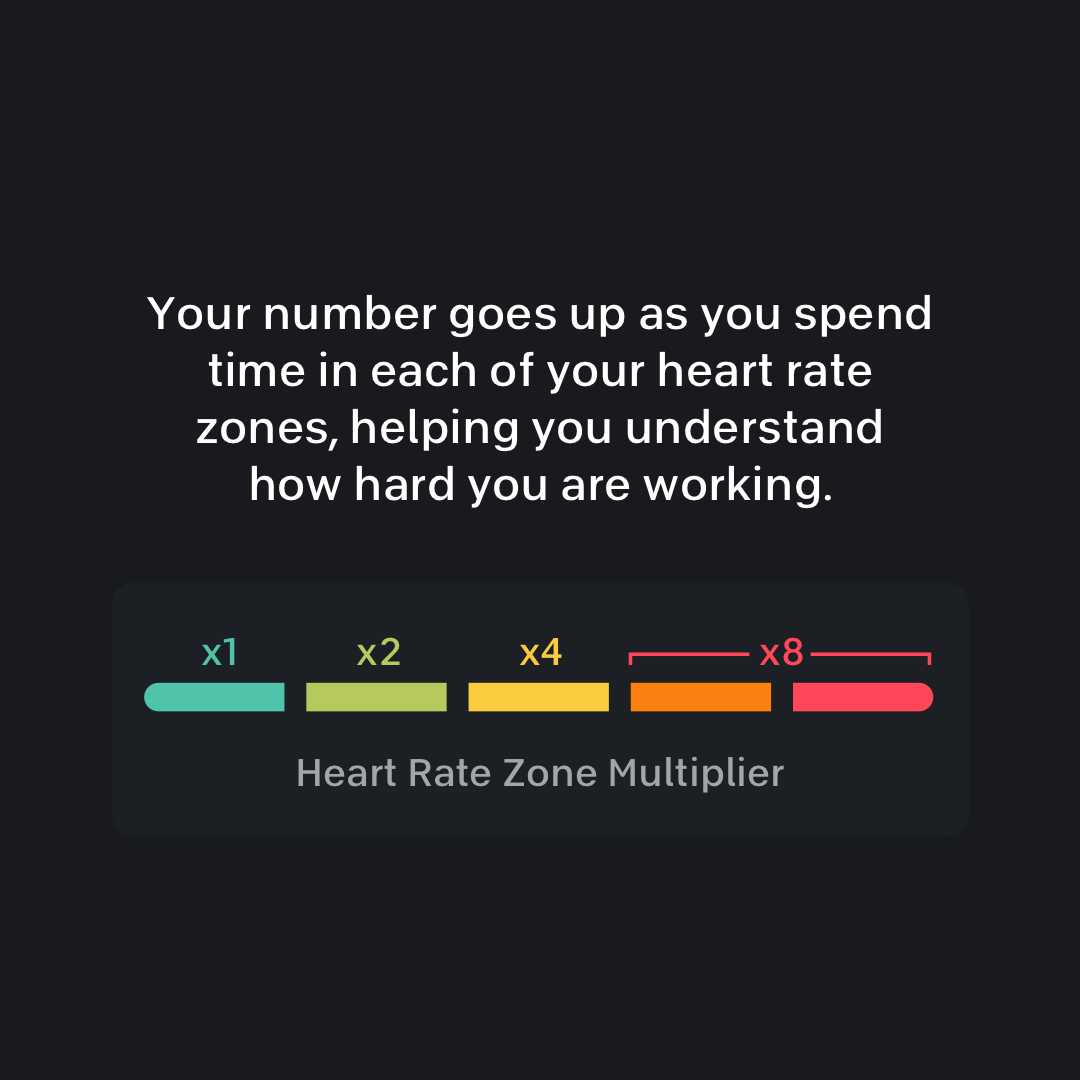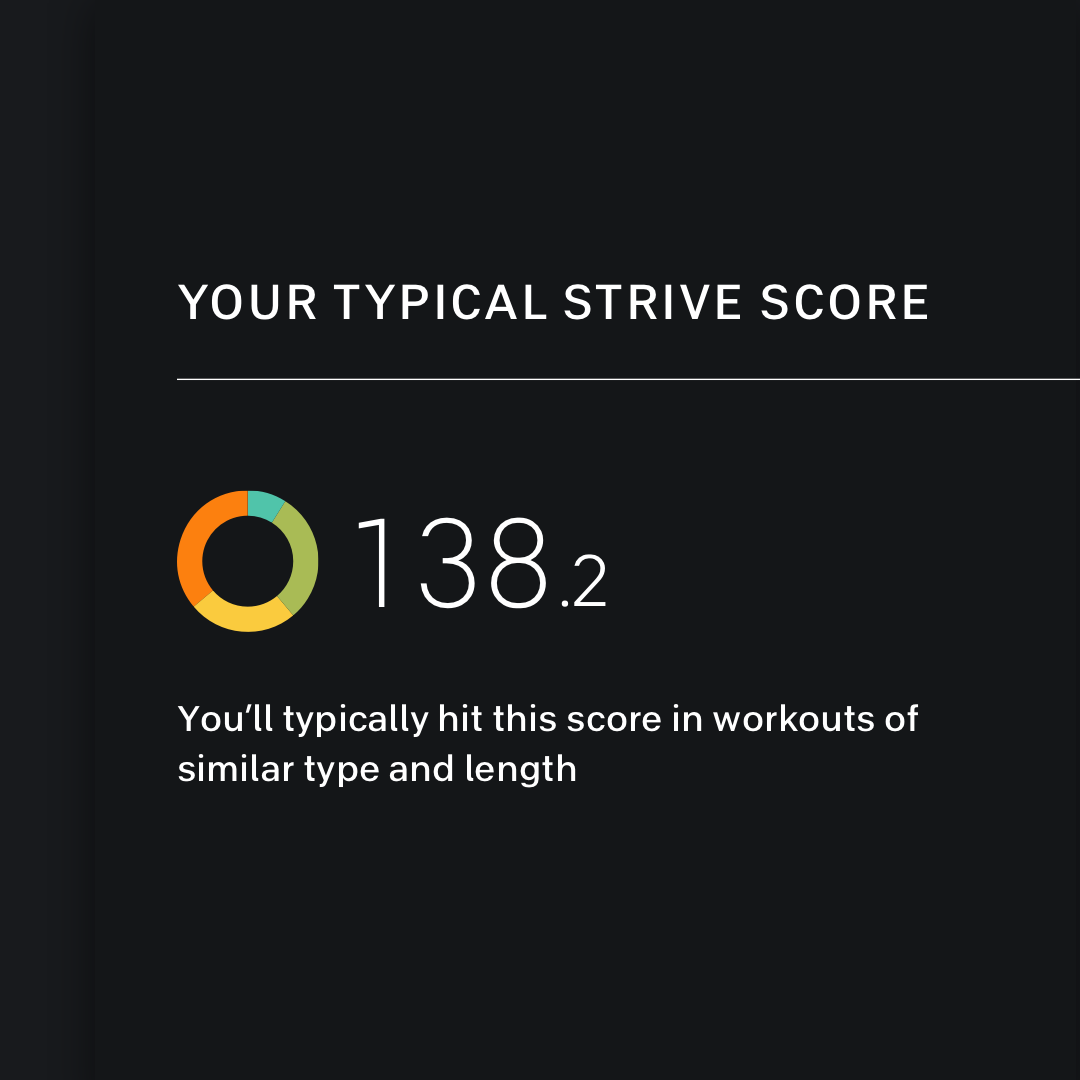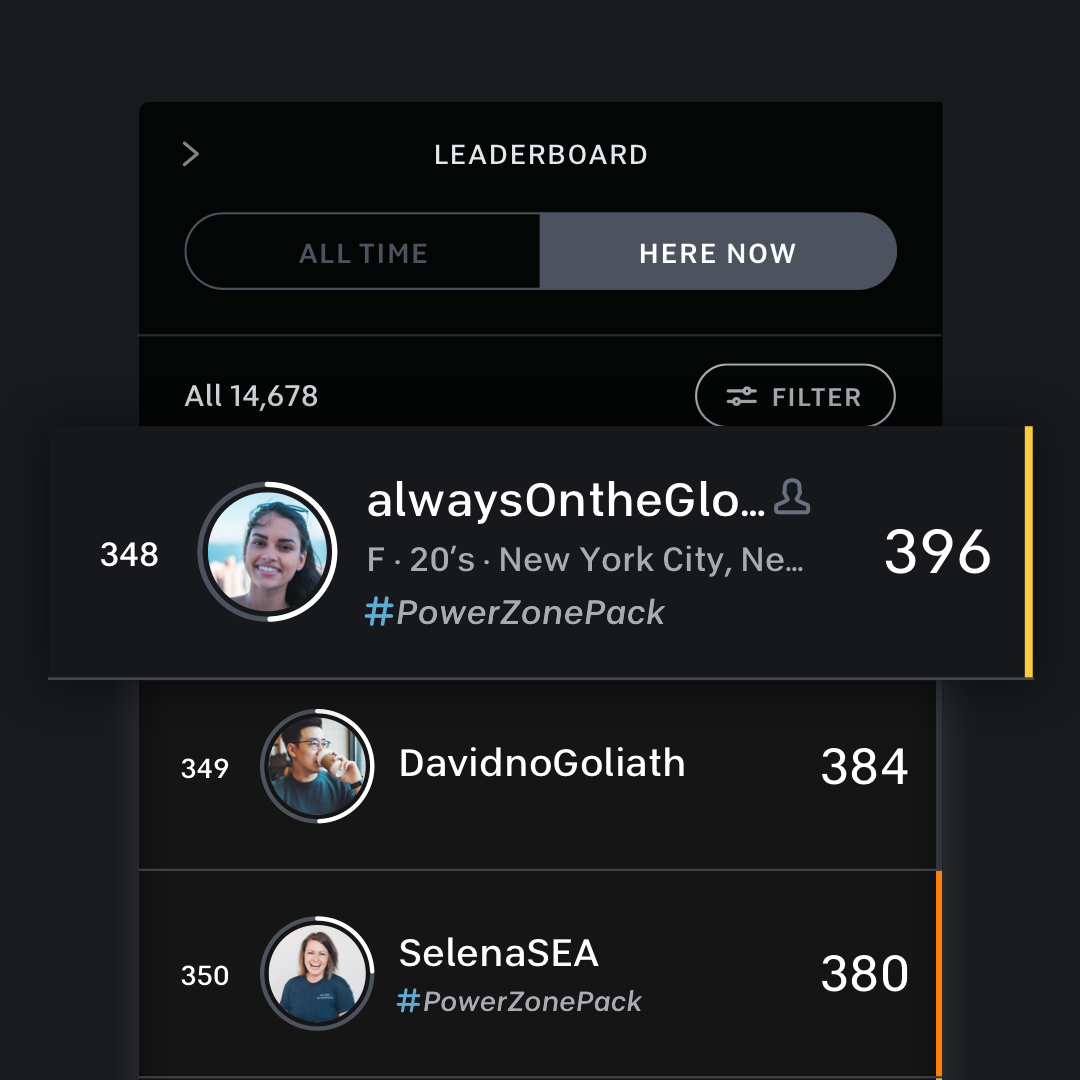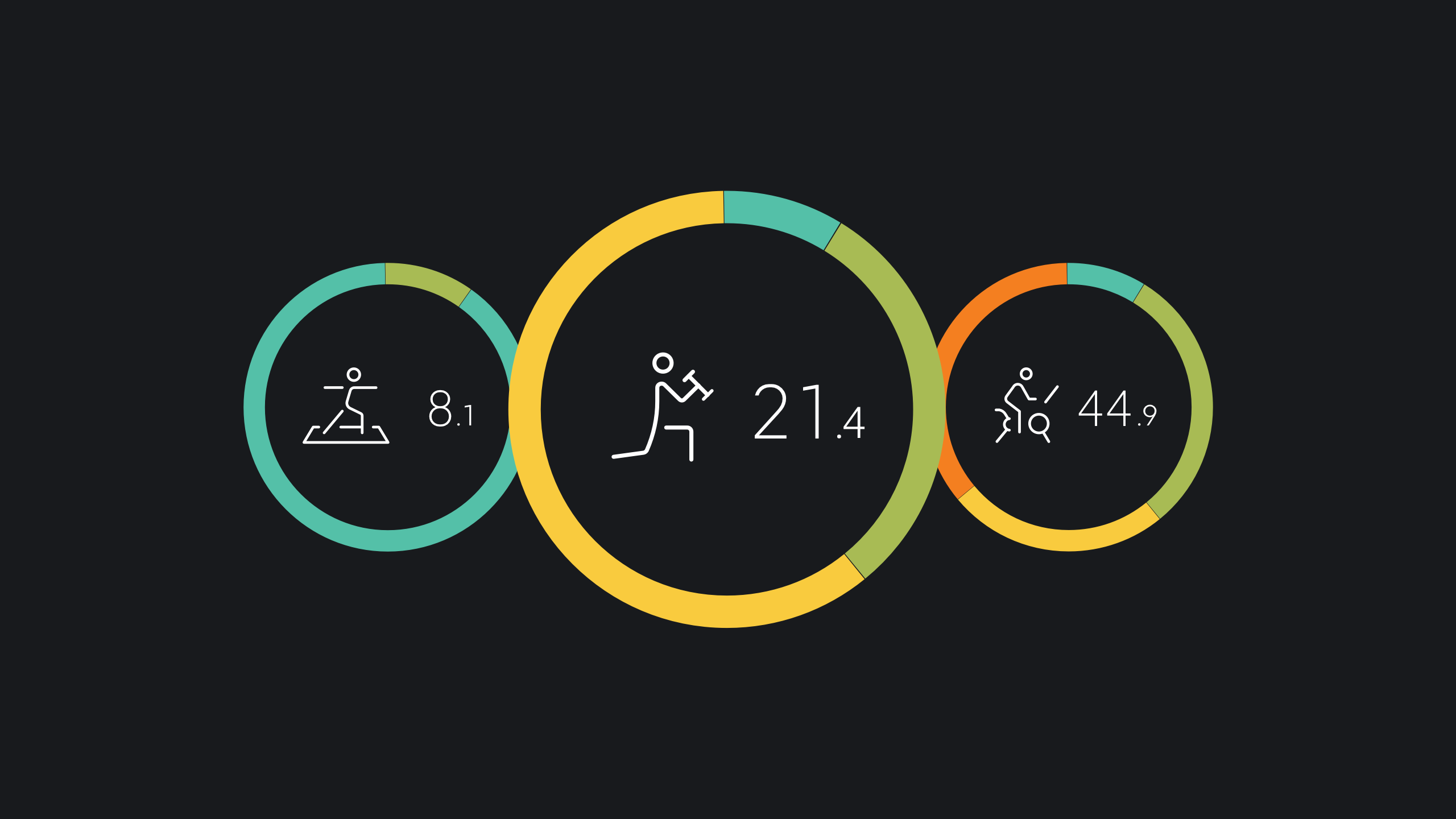Peloton’s Strive Score Is the Latest Way to Track Your Performance
Discover more ways to reach your goals with Peloton
Get a more complete picture of your workout.
We’re constantly looking for ways to help you work toward your strongest and most fit self. That’s why we’ve introduced Strive Score: a personal, noncompetitive metric based on your heart rate, measured with a compatible heart rate monitor, such as Peloton's Heart Rate Band.
Strive Score measures how much time you spend in each heart rate zone to track how hard you’re working in every workout—from equipment, to the floor. The goal is to give you an easy way to compare your performance across workouts, including those that don’t have power-based output from a connected device, like strength, HIIT and bootcamp classes.
How it works
If you connect a compatible heart rate monitor, you’ll see your heart rate and Strive Score displayed on your tablet as you work out. Your Strive Score will increase over the course of the workout based on the time you spend in different heart rate Zones. When you are in a floor workout or segment of class, you’ll see that heart rate and Strive Score become the primary metric, rather than your cycling output.

Based on general guidelines from the CDC, we calculate your heart rate zones based off of the birthday on your Peloton profile, or you can add your max heart rate. Heart rate zone bars on the All Time and Here Now Leaderboards show you the zones of those working out who are also wearing heart rate monitors. You can opt out of showing others your heart rate zone on the Leaderboard in “Privacy Settings. You can turn off the Strive Score feature at any time by toggling it off in your profile preferences, or you can keep it on and choose not to display it to others in class so that it’s only visible to you.
Once you’ve begun using the feature, at the start of a class, you’ll see your “Typical Strive” for the type of workout you’ve selected, which is calculated based on your previous Strive Scores for classes of similar type and length. After class, you can view your Strive Score for that workout in your workout history and compare it to previous workouts.
How we measure "Strive"
Strive Score is calculated based on time spent in each heart rate zone. You will earn a fraction of a point for each second that you’re in a zone. If you’re new to training with heart rate zones, this tool takes the math out of the process, allowing you to track your progress and compare your workouts based on heart rate as well as “feel.” Remember, each person may feel a bit different working out, so trust your body to know what feels right.

Pictured: Strive Score Point Ratio
Zone 1: up to 65% of Max Heart Rate = 1x
This zone should feel like an active recovery pace, or what your cycling classes would refer to as a flat road. It’s important to spend time here to flush out and stretch your muscles, maintain your overall workout momentum and get your blood pumping.
Zone 2: 65%–75% of Max Heart Rate = 2x
Don’t let the word “aerobic” conjure up images of leg warmers—this is the zone where you’ll build endurance and start to get what we’ve come to know as that “glazed-donut” look. You’ll feel some exertion, but you should be able to keep up this intensity for a long time.
Zone 3: 75%–85% of Max Heart Rate = 4x
You’ve kicked it up a notch, and you’re starting to feel your breathing get heavy and your body get warm—if you’re talking back to your instructor, it’s probably just in your head and not out loud. This level of effort is sustainable for a while, but once you’ve hit this threshold, you’ll be glad for some time back in Zone 1.
Zone 4: 85%-95% of Max Heart Rate = 8x
This is where you’re pushing past your previous limits—and that doesn’t happen every day, nor should it last your entire workout. These sets will feel stressful on both your muscular and cardiovascular system, and your time here will be limited to short bursts of effort, like an intense finisher on the floor.
Zone 5: 95%+ of Max Heart Rate = 8x
You’re at your max, and your whole body knows it—you’re sweating and shaking, you’re at the edge of what your muscles can withstand and you’re calling on all your strength and mental toughness to keep breathing and keep working. To get here safely, you’ll need to be well-rested and prepared to go all out while you’re in this zone, knowing that you’ll drop back into a recovery immediately after. Remember, you shouldn’t spend too much time in this zone.
We arrived at this way of generating a Strive Score after exploring a wide range of current research and consulting with the experts from our Health and Wellness Advisory Council, with the shared goal of creating a meaningful metric that will still support a healthy psychological approach to exercise and fitness. For that reason, while you’ll initially earn more points as you move into higher heart rate zones, spending more time in Zone 5 will not increase your Strive Score any more than time spent in Zone 4, to discourage you from spending more time than is necessary for your training at your maximum heart rate.
Strive Score favors higher heart rate and therefore higher-intensity workouts, and we are aware that this is only one of many conceptual frameworks that are used to help people achieve their own individual fitness goals. Further, fitness goals that incorporate a wide range of activities, from cardiovascular, to strength, balance and flexibility training, may all be part of a comprehensive fitness plan as recommended by a person’s healthcare team.

While this feature is intended to motivate you, it is not meant to push you past your physical abilities or what your own doctor has told you is safe for you. As always, you should consult your doctor and consider your underlying medical conditions before using the Strive Score feature and taking any Peloton classes. If at any time you feel that this feature isn’t right for you, you can opt out of Strive Score in your settings and continue tracking your heart rate without a corresponding score.
Where can I find it?
This feature is available now for Peloton All-Access and App Members. All-Access Members will be able to use this feature on all Peloton equipment, the mobile application, Apple TV, and Fire TV.

Choosing a heart rate monitor
This is most often an individual decision that comes down to personal preference and comfort. Past research has studied what types of devices work best for various types of activities. For example, certain chest straps have been thought of as more precise especially when running at faster speeds, but advances in technology have also led to a variety of wrist-based straps, watches, arm bands and even rings that can be reliable in the right circumstances. Some people even decide to wear a combination of devices to track heart rate (and other measures) throughout the day and night. It’s also important to note that how and when a person wears the device will impact its accuracy – for example, a loose wrist strap may have inaccurate readings, especially during rapid arm movements.
Peloton hardware (excluding Bike+) is compatible with Bluetooth LE and ANT+ heart rate monitors, and the Peloton Bike+ is compatible with Apple Watch.
Disclaimer
As a reminder, depending on a person’s physical condition, age, co-existing medical conditions, and/or fitness level, exercise activities may involve substantial risk of injuries, including but not limited to, muscle strains, cardiovascular problems (e.g., angina, heart attack) and neurological problems (e.g., stroke). It is also important to understand that a person’s heart rate changes differently with different types of exercise. For example, if your goal is to participate in a high-intensity interval training workout, you can use heart rate to help ensure that your intervals vary in intensity within a suitable range based on your health status and guided by your treating physician. Tracking heart rate over a long period of time can also help with understanding whether a person is making positive strides in their cardiovascular fitness routine.
Consult with your doctor and consider your underlying medical conditions, including pre-existing cardiac and orthopedic conditions, before using the Strive Score feature and taking any Peloton classes.
This content is for informational and educational purposes only and does not constitute individualized advice. It is not intended to replace professional medical evaluation, diagnosis, or treatment. Seek the advice of your physician for questions you may have regarding your health or a medical condition. If you are having a medical emergency, call your physician or 911 immediately.






